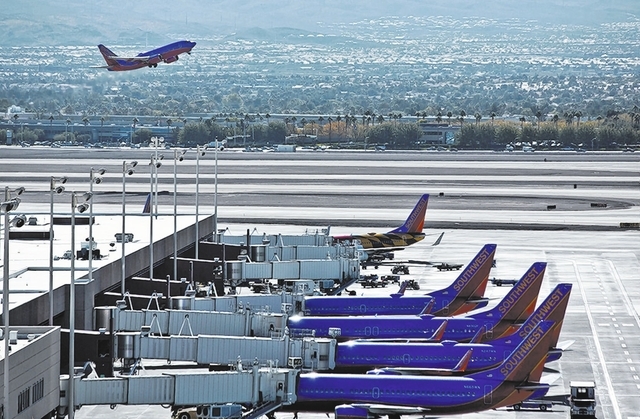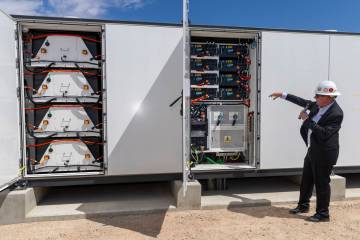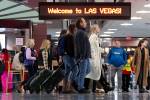Terminal 3 drove up McCarran revenues but brought new expenses, report says
The arrival of McCarran International Airport’s Terminal 3 drove revenues sharply higher but also brought a load of new expenses.
As a result, the Clark County Department of Aviation, which is treated as an independent accounting unit called an enterprise fund, posted a $33.5 million loss before federal grants, the audit for fiscal 2013, which ended June 30, shows.
Although operations produced the highest income in four years, a 47 percent rise in interest payments on the bonds that paid for construction weighed on the bottom line.
Passenger traffic is only inching ahead, limiting opportunities to collect more revenue from airline fees, parking and concessions.
So, penny-pinching measures such as hanging on to computers longer, leaving some positions open and running paper towel rolls in bathrooms to the end will continue indefinitely, according to the audit.
Also, the $38 million check the county wrote to settle an inverse condemnation lawsuit brought by a former landowner affected by flight path-related building height restrictions will take its budgetary toll.
McCarran spokeswoman Christine Crews said several projects must be shelved to free funds to cover the payment. The list of deferred spending includes buying certain houses in noisy neighborhoods near the runways, implementing an energy savings program highlighted by a solar energy installation, installing light-emitting diode lights on the airfield and parking garage, upgrading taxiways at the North Las Vegas airport and creating a larger aircraft parking area at the Henderson Executive Airport.
Henderson has hosted a large part of the National Business Aviation Association convention twice in the past three years.
“Travelers and local residents should not assume the community’s airports can simply absorb this (lawsuit settlement) with no ill effects,” Crews said in a statement.
The total revenues of $496.6 million marked a 39.7 percent increase from last year. Within the total, the fees and charges collected from the airlines doubled, while the income from all other operations, including store and restaurant rentals, parking and the car rental center, rose 6 percent.
However, the 2012 revenues were depressed by $50.7 million because of the accounting treatment of a three-year rent deferral given to the airlines by McCarran management. This was done to avoid a sudden leap in charges and instead mete them out in smaller bites.
The $33.5 million loss before grants from the federal government came as depreciation and interest expenses both jumped by nearly half because of the opening of Terminal 3 in June 2012.
The 2012 loss amounted to $169.6 million, but the valuation of certain debt instruments rose by more than $100 million last year, helping to shrink the loss.
Viewed from a micro perspective, the airlines paid $12.22 for each passenger last year — called cost per enplanement. That figure was McCarran’s highest ever and nearly double the level of 2008.
Lower passenger counts and increasing debt service raised McCarran from the low-cost to midlevel when ranking the costs of big airports.
By contrast, revenues from all other sources came to $9.47 per passenger.
The bonds sold to pay for certain construction, notably Terminal 3, boosted the amount needed to cover debt service to $9.57 per passenger, a 119 percent increase over the past five years.
Basic operations stood at $11.22 per passenger, a 3 percent gain over the same span.
Contact reporter Tim O’Reiley at toreiley@reviewjournal.com or at 702-387-5290.




























